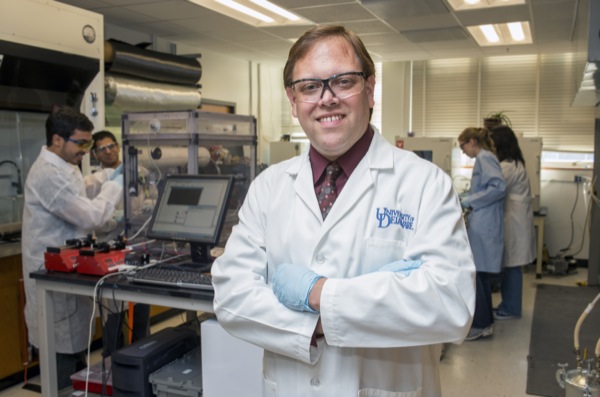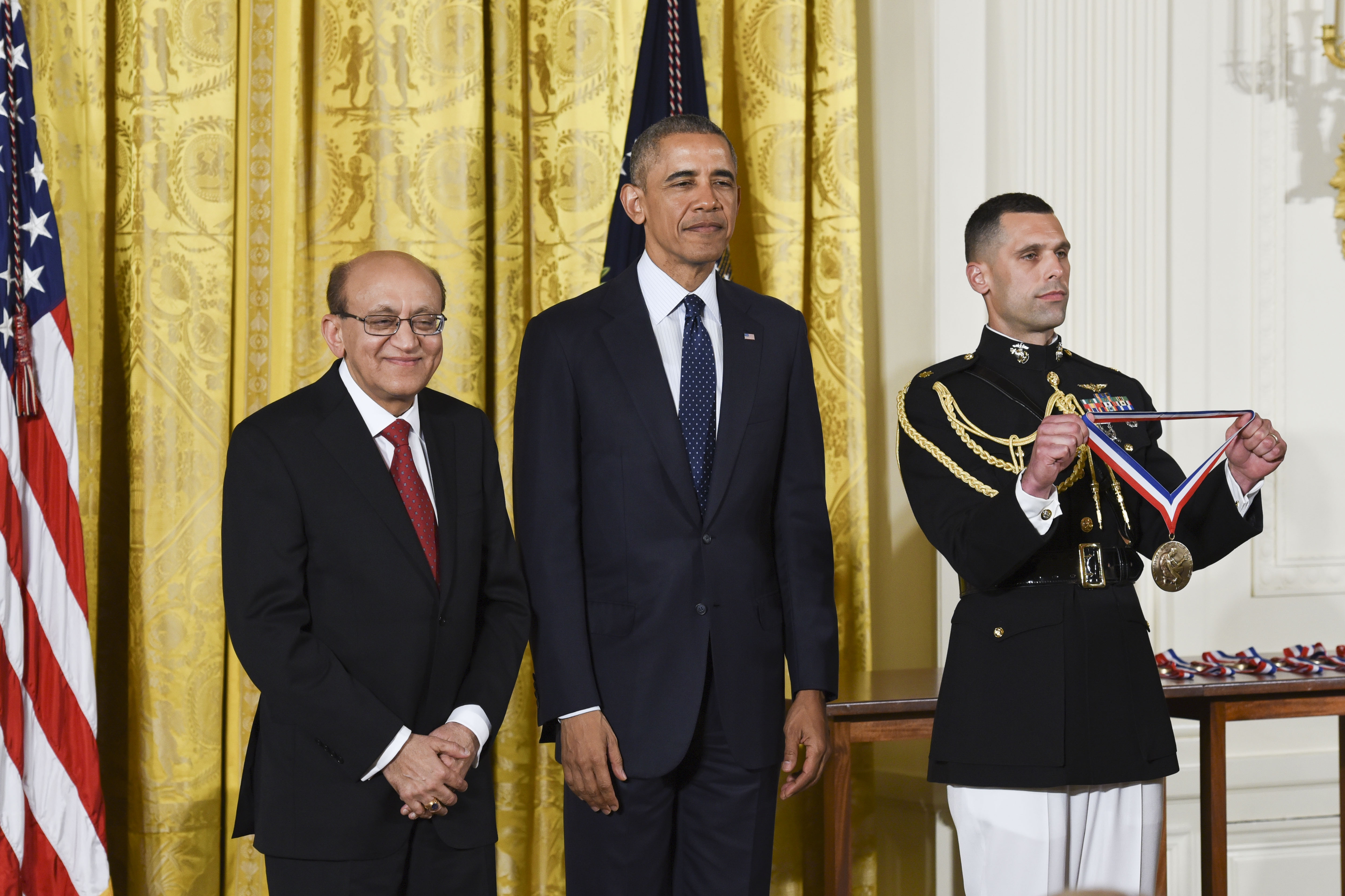
NSF Career Award
Thostenson receives prestigious National Science Foundation award
12:37 p.m., Jan. 14, 2013--Erik Thostenson’s fascination with composite materials grew out of his love for downhill skiing. “I was intrigued that the performance characteristics of various skis could be remarkably different, yet the skis themselves could look identical,” he says. “The same basic materials — graphite, carbon, and Kevlar — are used in most high-tech skis, but advanced composite technology enables mogul skis to be flexible while racing skis are stiff.”
Two decades later, Thostenson is still fascinated with these high-tech materials and their almost limitless potential to be tailored for applications far beyond high-performance skis.
Honors Stories
National Medal of Science
Warren Award
Now an assistant professor in UD’s Department of Mechanical Engineering with a secondary appointment in the Department of Materials Science and Engineering, he recently received a prestigious five-year, $400,000 Faculty Early Career Development Award from the National Science Foundation (NSF) to investigate a new processing approach for novel multi-scale hybrid composites with functionally graded material properties.
The research exploits the unique properties of carbon nanotubes, whose size offers opportunities while also presenting challenges.
“Because nanotubes are so small, they can penetrate the polymer-rich area between the fibers of individual yarn bundles as well as the spaces between the plies of a fiber composite,” says Thostenson, who is also an affiliated faculty member in UD’s Center for Composite Materials (CCM). “The nanotubes become completely integrated into advanced fiber composite systems, adding functionality without altering the microstructure of the composite.”
The problem? How to get the nanotubes where they need to be so they can do their job.
Thostenson plans to study an environmentally friendly water-based processing technique as an alternative to current energy-intensive approaches for integrating carbon nanotubes within fibrous structures.
“Our preliminary research has established an efficient technique for producing very stable aqueous suspensions of highly dispersed carbon nanotubes in a single processing step,” he says. “The technique enables the nanotubes to fully penetrate fiber bundles and form chemical bonds with the fiber surface.”
Major advantages of the proposed approach are that it is carried out under ambient conditions and is industrially scalable for future applications.
“This is important for the future use of these hybrid materials, which offer remarkable improvements in shear strength, fracture toughness, and electrical conductivity over traditional fiber-reinforced composites,” Thostenson says. “Our work is paving the way for integrating adaptive, sensory, and energy storage capabilities into structural composite materials.”
With an undergraduate degree in composite materials engineering from Winona State University in Minnesota, Thostenson first came to UD in 1995 to study at CCM as a center-affiliated graduate student.
“CCM is unique in terms of both facilities and personnel,” he says. “The environment is highly interdisciplinary and greatly facilitated my growth as an independent researcher. I knew that my future students would benefit from the same environment.”
Thostenson’s students will also benefit from the innovative education plan he has devised for his Career Award: a junior-level research and design project to develop a lab-scale pilot facility for continuous deposition, with a working pilot facility constructed as a follow-on senior research project. He also plans to develop a nanotechnology course module for high school students to help to build the pipeline of engineers interested in careers in materials and nanotechnology.
About the NSF Career Award
The Faculty Early Career Development Program offers the National Science Foundation’s most prestigious awards in support of junior faculty who exemplify the role of teacher-scholars through outstanding research, excellent education, and the integration of education and research within the context of the mission of their organizations.
About the Center for Composite Materials
Founded in 1974, CCM is an internationally recognized model for industry-university-government cooperative research. Over its 38-year history, CCM has been home to numerous centers of excellence, including one of the first National Science Foundation Engineering Research Centers (NSF-ERCs), in 1985.
Article by Diane Kukich
Photo by Kathy F. Atkinson








